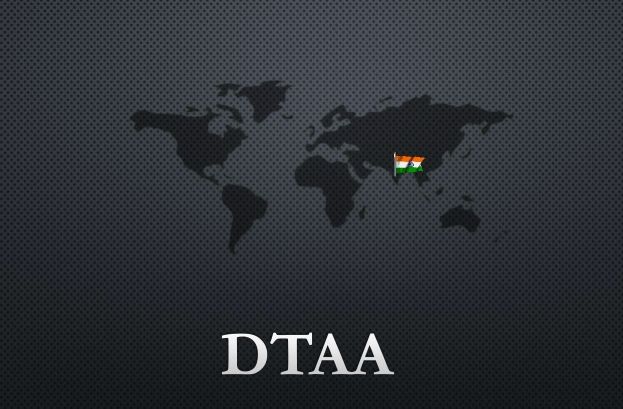
How to claim Benefits Under DTAA for NRIs
NRIs can avoid paying double tax as per the Double Tax Avoidance Agreement (DTAA). Usually, Non-Resident Indians (NRI) live abroad, but earn income in India. In such cases, it is possible that the income earned in India would attract tax in India as well as in the country of the NRI’s residence. This means that they would have to pay tax twice on the same income. As a measure to avoid this, the Double Tax Avoidance Agreement (DTAA) was amended.

Understanding DTAA
The Double Tax Avoidance Agreement is a treaty signed by two countries. The agreement is signed to make a country an attractive destination as well as to enable NRIs to get relief from having to pay taxes multiple times. DTAA does not mean that the NRI can completely avoid taxes, but it does mean that the NRI can avoid paying higher taxes in both countries. DTAA does allow an NRI to cut down on their tax implications on the income earned in India. DTAA also reduces the instances of tax evasion.
DTAA rates
DTAA, signed by India with different countries, fixes a specific rate at which tax has to be deducted on income paid to residents of that country. This means that when NRIs earn an income in India, the TDS applicable would be according to the rates set in the Double Tax Avoidance Agreement with that country.
Countries that India has a DTAA with
India has signed a Double Tax Avoidance Agreement with most major nations where Indians reside. Some of these countries are:
| Country | DTAA TDS rate |
| United States of America | 15% |
| United Kingdom | 15% |
| Canada | 15% |
| Australia | 15% |
| Germany | 10% |
| South Africa | 10% |
| New Zealand | 10% |
| Singapore | 15% |
| Mauritius | 7.5% to 10% |
| Malaysia | 10% |
| UAE | 12.5% |
| Qatar | 10% |
| Oman | 10% |
| Thailand | 25% |
| Sri Lanka | 10% |
| Russia | 10% |
| Kenya | 10% |
See more here - Government of India Official website
Income types under DTAA
Under the Double Tax Avoidance Agreement, NRIs don’t have to pay tax twice on the following income earned from:
- Services provided in India.
- Salary received in India.
- House property located in India.
- Capital gains on transfer of assets in India.
- Fixed deposits in India.
- Savings bank account in India.
If income from these sources is taxable in the NRI’s country of residence, they can avoid paying taxes on it in India by availing the benefits of DTAA.
DTAA methods
The benefit of DTAA can be used by two methods:
- Tax credit: Tax relief under this method can be claimed in the country of residence.
- Exemption: Tax relief under this method can be claimed in any one of the two countries.
Frequently Asked Questions
The income on which a NRI can claim tax exemption/credit will be mentioned in the DTTA with the resident country. The provisions of DTAA are not the same for all countries.
How to take benefit of DTAA?
>> Non- resident Indians residing in any of the countries with which India has entered into DTAA can avail of tax benefits provided under DTAA by arranging the following documents:
>> Tax residency certificate: The Tax Residency Certificate (TRC) can be obtained from the Government (tax authority) of the country in which the NRI resides. Details like name, legal status (individual, company, firm etc), address, nationality, country, tax identification number of the person in respective country, tax status, period for which the tax certificate is issued, all should be mentioned in the TRC.
>> Self-declaration cum-indemnity form: This form is to be submitted in the format prescribed by the particular bank.
>> Other documents: NRI is required to submit a self-attested copy of PAN card and a self-attested copy of his passport and visa. If the passport has been renewed during the financial year, a copy of Person of Indian Origin (PIO) card will also have to be submitted.
>> The documents listed above must be furnished on an annual basis for claiming DTAA tax benefits each year. Indian law also mandates tax withholding at the time of making any payment to non-residents. Hence, the abovementioned documents must be produced to the payer in India to ensure that the tax withholding happens after due consideration to the benefits provided in the DTAA. If TRC is not submitted to the deductor, the deductor may deduct tax on deposits at the presently applicable rate of 30.9% instead of the lower rate as mentioned in the DTAA.
What are the types of income for which benefit under DTAA is usually availed:
Following incomes are typically covered in DTAAs on which relief is provided for double taxation:
1. Services provided in India
2. Royalty earned in India
3. Salary earned in India due to employment rendered in India
4. House property located in India
5. Capital gains on transfer of assets in India
6. Interest income earned in India
What are the details to be mentioned in the TRC:
1. Name of the assessee
2. Status (individual, company, firm etc.) of the assessee
3. Nationality of the assessee
4. Assessee’s tax identification number in the country or specified territory of residence or in case no such number, then a unique number on the basis of which the person is identified by the Government of the country or the specified territory
5. Period for which the residential status as mentioned in TRC is applicable
6. Address of the applicant (outside India) for the period for which TRC is applicable
A TRC containing the above details should be duly verified by the Government of the Country or the Specified Territory of which the NRI claims to be a resident for tax purposes. It is important to note that, if any, of details mentioned above in point no. 1 to 6 is not available in the TRC, the NRI has to additionally provide Form 10F (as provided in the Act) to the payer of income along with the TRC.
How to obtain a TRC:
A NRI may approach the appropriate Income Tax or Government Authorities of the country where he/she resides to obtain a TRC. NRI may check with a Chartered Accountant for the detailed procedure to obtain TRC.
An Indian resident may make an application for TRC in Form 10FA to the Income Tax Department. Subsequently on verification of details furnished, the Income Tax Department will issue a TRC to the Indian resident in Form 10FB.
Validity of TRC: A TRC is typically valid for one financial year and no other document in lieu of TRC is considered for availing DTAA benefits. Therefore, it is mandatory to submit TRC every year in order to avail DTAA benefit without any hassles.
Comments